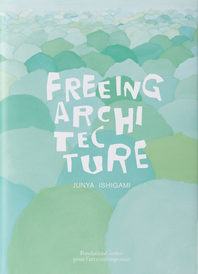Zurich
While most of its eurozone neighbors were whacked by financial crises, Switzerland managed to avoid a recession, and its economy grew by 1 percent in 2012. This relative robustness is evident in Zurich, where no vista seems clear of construction cranes. In the last several years the gritty, industrial west side of the city, across the Limmat River, has experienced the beginnings of a transformation into a residential and business district. The Zurich firm EM2N turned an old viaduct into a High Line'esque walking path, filling its arches with pricey stores and a food market. A glass mixed-use tower by Gigon / Guyer'the tallest in Zurich'was completed in 2011, and its 35th-floor bar overlooks a tapestry of train tracks.
Building is also booming in the already densely packed suburban hills on either side of Lake Zurich, where one of architect Gus W'stemann's newest houses almost disappears among traditional Swiss structures and slapdash condominiums. The lake's south-facing bank, called Erlenbach, remains a desired place to live for its views of the water and the Alps beyond. W'stemann's clients, a South African family with two young children, approached the Zurich-born architect to help them make the best use of their sloping site. He conceived two rectangular volumes'one for the house at the top of the hill; the second, a pool pavilion at the bottom. An exterior stair connects the two.
W'stemann founded his firm in 1997 and received his M.Arch. from ETH (the Swiss Federal Institute of Technology) in Zurich. He loves concrete for its Brutalist, 'it is what it is' attitude, and his goal was to design a house that was not a house''a strong figure that has a presence, atmosphere, patina,' free from the conventions of the program. A sense of monumentality is most evident on the interior. Here board-formed concrete planks create the foot-and-a-half-thick walls of the house. 'The sensation is not separation but presence,' says W'stemann. 'They have the dimension of mass, like an Egyptian temple.'
On the top floor, a concrete barrel vault sliced with clerestory windows arcs over the kitchen and dining areas. This space also connects seamlessly to a terrace with sliding glass walls. The roof, a bit more than 2 feet thick, was the most technically difficult feat W'stemann has attempted. 'The profile is like a shark fin,' he says.
The living space one floor below connects by another sliding glass door to an open-air room with built-in concrete benches, which receives daylight from a large square opening in the floor of the upper terrace. 'It's nice to shape more than just walls'to make it topographical,' says W'stemann. When standing at this level, one has glimpses of the lake through the trees and houses, framed by voids in the oak-and-sipo-mahogany-clad pool pavilion down the hill.
The architect's sculptural touch is most evident in the moody basement buried in the hill beneath the main level with the living space and bedrooms. Here, a family and entertainment area makes the most of the lack of daylight. On a snowy February day, W'stemann swiveled and pointed to the concrete furniture and strong, horizontal bands of cove lighting that punctuate strategic areas of the walls and floor. The 'shelves' of a glass-enclosed wine room, also illuminated with bars of LED and fluorescent lights, are made of blocks of wood. 'The light gives you a horizon,' said the architect, who manipulates lighting at the periphery and corners of the rooms to help direct movement through the space. In doing so, W'stemann has made every attempt to disguise the pedestrian necessities of the house; even the mechanical room is hidden behind a backlit, hand-sanded glass door.
W'stemann shuttles weekly between his small offices in Zurich and his home in Barcelona, where he converted a loft for his wife and children (RECORD, September 2010, page 102). During the recent visit to the house in Erlenbach, he laughed as he slid open the facade of the top floor to demonstrate the sensation of indoor-outdoor living, only to welcome a cold blast of air. 'I only build summer houses,' he joked. 'It tranquilizes me to see the material,' he continued, patting the concrete. 'I grew up in a lovely traditional house with a lot of stairs and rooms and never felt I lived in the space.'
Completion Date: February 2012
Size: 10,500 square feet
Total construction cost: withheld
PeopleOwner: private
Architect
ESCULLERA DEL POBLE NOU 163
Personnel in architect's firm who should receive special credit: Engineer(s): Born Partner AG, Kilchberg, ZH
Consultant(s): Construction management: Jaeger Baumanagement AG, Zürich MEP: Frei + Partner Haustechnikplanung GmbH, Baden AG Building physics: Gartenmann Engineering AG, Zürich Metal construction: R+R Metallbau AG, Birsfelden, BL General contractor: Corti AG, Winterthur, ZH
Photographer(s): CAD system, project management, or other software used: Microstation V8 |
Products
Structural system
Exterior cladding
Roofing
Windows
Glazing
Doors Sliding doors: Cremer Bruhin AG, Horgen, ZH
Interior finishes
Cabinetwork and custom woodwork:
Floor and wall tile:
Natural stone:
Special interior finishes unique to this project:
Furnishings
Lighting
Plumbing Plants und natural stone flooring outdoor: Enea GmbH, Rapperswil-Jona, SG
Add any additional building components or special equipment that made a significant contribution to this project:
Active ventilation System: |


















